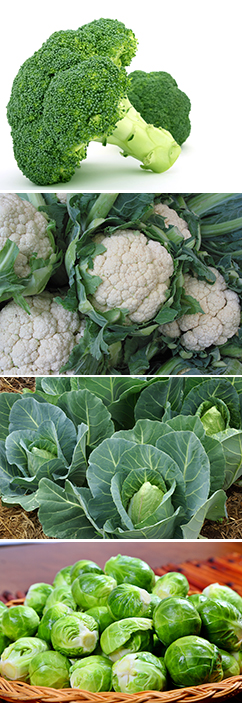The rain is finally here which means it's the perfect time to start getting your winter vege garden growing! Usually, we recommend starting this early autumn so that it's ready to be eaten at the beginning of winter, but it's still a good time to get planting. We also recommend planting some seedlings every couple of weeks in order to get a continuous supply of winter vege.
Can you think of anything more 'winter vegetable' than any of the members of the brassica family? This illustrious family of vegetables includes broccoli, cauliflower, Brussels sprouts, cabbage, turnips and more. And they're all a good source of fibre and contain a variety of other minerals and vitamins. It's also a great time to plant your leafy greens such as kale, silverbeet and spinach.
Once you've got your seedlings from our online store your local supermarket, you need to find a spot to plant them. The trick to successful brassica growing is planting in a different spot to where you've previously grown brassicas. This will help ensure they don't get the fungal disease clubroot.
Then apply a fertiliser which is moisture controlled, such as nitrophoska blue, over one that is temperature-controlled, like blood and bone. Next, add lime to the soil to stop it going sour when wet and to also help prevent clubroot. Once your seedlings are planted (around 35-50cm apart), spread some mulch around to retain the moisture.
As your brassica plants will take a long time to mature, during the earlier weeks you could plant other seedlings that mature quickly in the spaces between each brassica seedling. This is known as companion planting.
Beetroot, pak choi and spring onions are all narrow in size and mature within eight to 10 weeks, making them the perfect companion for broccoli. Also, don't forget to put out some beer bait to get any hungry slugs and snails.
If the cooler months are particularly dry this year, you may need to water your garden occasionally. Simply put your finger in the soil to about the second knuckle and if it's dry give it water.
If the area where you live is prone to frosts, fold the leaves of any cauliflowers over (once they start to develop heads) so they don't get frost damage.
Depending on the weather conditions in your area, your selection of vegetables should be ready for harvest in two to three months. Broccoli and cauliflower need to be harvested before they flower, as once they do, the plant will die.
Use a knife to diagonally cut off the heads of broccoli and cauli you have selected. Harvesting them this way encourages new heads to grow and will also ensure a long cropping season. Handy hint: If I harvest too much, I simply chuck the excess in the freezer. They can be kept in the freezer for two-to-three months, so don't worry if you harvest a tad more than you need at the time.
And for harvesting Brussels sprouts, wait till they reach slightly smaller than the size of a golf ball. Then simply pick the ones you need for that evening's meal off the stem of the plant and leave it to grow more.
Lastly, to help prevent clubroot for next year, once you've harvested all your brassicas, plant mustard seeds in the soil (while you rotate your crops). When the mustard has matured to around 10cm (when the leaves are soft), dig it into the soil. This will help get rid of any clubroot in the soil.

